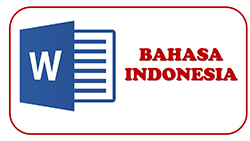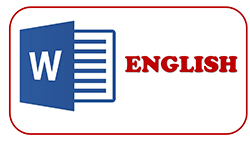Analysis of The Implementation of Qur'an Learning Using The Iqra' Method in Elementary Schools
Abstract
This study analyzes the effectiveness of the Iqra method in improving elementary school students' reading ability in the public school environment. It aims to explore how the Iqra method can be adapted in the formal education system, especially in the context of public elementary schools, which have limited religious lesson hours and heterogeneous student reading abilities. This study uses a qualitative approach with a case study design. Data was collected through classroom observations, in-depth interviews with teachers and students, and analysis of documents related to learning the Qur'an. The study results show that the Iqra' method applied systematically, combined with interactive learning media and formative-based evaluation systems, significantly improves students' Qur'an reading ability. Students who initially had difficulties in recognizing and prociting hijaiyah letters showed a gradual improvement in fluency and reading accuracy after participating in Iqra'-based learning. These findings confirm that the Iqra' method is not only effective in non-formal educational environments such as TPA, but can also be optimally implemented in the public elementary school system with the right strategy. This study has a scientific contribution by highlighting how the Iqra' method can be integrated in formal education systems with structural limitations, which has been rarely studied in previous studies.
Downloads
References
Abdallaoui Maan, N. (2021). Improving Arabic reading ability and acquiring ICTs skills of a newly-literate adult learner. Studies in the Education of Adults, 53(1), 23–41. https://doi.org/10.1080/02660830.2020.1791521
Asrori, M. (2020). Pengembangan teknik pembelajaran Al-Qur’an melalui metode Iqra’ di sekolah dasar. Jurnal Pendidikan Islam, 4(2), 112–125.
Athiyah, F. (2022). Implementasi Metode Iqro’ untuk Meningkatkan Kemampuan Membaca Al-Qur’an di SD Internasional Budi Mulia Dua Panjen Yogyakarta [Tesis]. Institut Agama Islam Negeri (IAIN) Surakarta.
Berglund, J., & Gent, B. (2019). Qur’anic education and non-confessional RE: An intercultural perspective. Intercultural Education, 30(3), 323–334. https://doi.org/10.1080/14675986.2018.1539305
Farida, L. & Purwidianto. (2023). Teacher in Quran Discourse: Formation of Quranic Mind at SMA 33 Negeri Jakarta. Jurnal Pendidikan Islam, 14(02), 60–65. https://doi.org/10.22236/jpi.v14i02.13333
Faridi, A., & Rahman, T. (2021). Problematika pembelajaran Al-Qur’an di sekolah dasar: Studi kasus di wilayah perkotaan. Edukatif: Jurnal Ilmu Pendidikan, 3(4), 1245–1258.
Fatkiyah. (2019). Implementasi Metode Iqra’ dalam Peningkatan Kemampuan Membaca dan Aktivitas Pembelajaran Al-Qur’an: Studi Kasus di Kelas II SD Negeri 2 Wates Kulon Progo Semester I Tahun Pelajaran 2018/2019. El-Tarbawi, 12(1), 85–95.
Fatmawati, E. (2020). Kerjasama Orang Tua dan Guru Dalam Meningkatkan Motivasi Belajar Peserta Didik. Ibtida', 1(2), 135-150.
Hanafi, Y., Murtadho, N., Hassan, A., Ikhsan, M., Diyana, T. N., & Saefi, M. (2021). Self-Regulation Learning Al-Quran. Malaysian Journal of Learning and Instruction. https://doi.org/10.32890/mjli2021.18.2.4
Hanafi, Y., Murtadho, N., Hassan, A. R., Saefi, M., Ikhsan, M. A., & Diyana, T. N. (2021). SELF-REGULATION IN QUR’AN LEARNING. Malaysian Journal of Learning and Instruction, 18. https://doi.org/10.32890/mjli2021.18.2.4
Hoechner, H. (2015). Mobility as a contradictory resource: Peripatetic Qur’anic students in Kano, Nigeria. Children’s Geographies, 13, 59–72. https://doi.org/10.1080/14733285.2013.827876
Ibrahim, N. J., Yusoff, Z. M., & Idris, M. Y. I. (2013). Quranic Verse Recitation Recognition: Engine for Self Learning of Method: A Review. 317–331. https://doi.org/10.1163/22321969-12340078
Kurniasih, S. R., Haryanti, E., & Hermawan, A. H. (2023). Integrasi Ilmu dan Iman dalam Kurikulum: Studi Kasus pada Sekolah Dasar Islam Terpadu. Al-Thariqah: Jurnal Pendidikan Islam, 4(2), 87–98.
Liew, C. P., Puteh, M., Lim, L. L., Yu, L. J., Tan, J., Chor, W. T., & Tan, K. G. (2021). Evaluation of Engineering Students’ Learning Outcomes: Creating a Culture of Continuous Quality Improvement. International Journal of Emerging Technologies in Learning (iJET), 16(15), 62. https://doi.org/10.3991/ijet.v16i15.23763
Liu, Y., Visone, J., Mongillo, M. B., & Lisi, P. (2019). What matters to teachers if evaluation is meant to help them improve? Studies in Educational Evaluation, 61, 41–54. https://doi.org/10.1016/j.stueduc.2019.01.006
Lubis, M. A. & et al. (2009). The Effectiveness of Strategies and Techniques in Teaching and Learning Islamic Education. 218–223. https://doi.org/10.1109/ICET.2009.5351484
Marlina, L. & et al. (2018). Makhraj Recognition of Hijaiyah Letter for Children Based on Mel-frequency Cepstrum Coefficients (MFCC) and Support Vector Machines (SVM) Method. 935–940.
Miles, M. B., Huberman, A. M., & Saldaña, J. (2014). Qualitative Data Analysis: A Methods Sourcebook (3rd, Ed.). Sage Publications.
Naj’ma, D. B. A. (2021). Collaboration of the Method of Iqro’ and Tsaqifa for Al-Qur’an Learning in the Group of Hajj and Umrah Worship Guidance at Karanganyar. SHAHIH: Journal of Islamicate Multidisciplinary, 6(1), 23–27. https://doi.org/10.22515/shahih.v6i1.3539
Nik Mohd, R., Baharuddin, H., & Mahamod, Z. (2010). The Level of Arabic Consonants Pronunciation among Preschool Children. GEMA Online Journal of Language Studies, 10(3), 1–14. https://doi.org/10.17576/gema-2010-1003-01
Nisa, Aniswatun; Amirudin, N. M. A. (2022). Implementasi Metode Qiro’ati Dalam Pembelajaran Baca Tulis Al-Qur’an Di Taman Pendidikan Al-Qur’an Baitul Mu’minn Benem Duduksampeyan. Implementasi Metode Qiro’ati Dalam Pembelajaran Baca Tulis Al-Qur’an Di TPQ Baitul Mu’minn Benem Duduksampyan Gersik.
Nurlina, N. & et al. (2021). Implementation of Cognitive Learning Theory in Arabic Learning. Journal of Arabic Learning and Teaching, 10(2), 86–95. https://doi.org/10.15294/lisanul.v10i2.44672
Pratama, R. A. (2018). Learning Media Based on Articulate Storyline 2 on Drawing Function Graphs Lesson in Smp Patra Dharma 2 Balikpapan. Best Journal (Biology Education, Sains and Technology), 1(1).
Putri, R. M. & et al. (2022). Development of Interactive Learning Media in Islamic Religious Education Learning. Journal of Education Technology, 6(1), 92–102. https://doi.org/10.23887/jet.v6i1.41635
Rahman, M., & Rachmah, I. E. (2018). Penerapan Metode Iqra’ pada Pendidikan Al-Qur’an di Sekolah Dasar Alam Muhammadiyah Banjarbaru. Darris: Jurnal Studi Ilmu Pendidikan Islam Dan Keislaman, 1(2), 85–98.
Rifky, S., Putra, J. M., Ahmad, A. T., Widayanthi, D. G. C., Abdullah, G., Sunardi, S., & Syathroh, I. L. (2024). Pendidikan Yang Menginspirasi: Mengasah Potensi Individu. Yayasan Literasi Sains Indonesia
Rohmawati, D., Nisa, R., & Hasyim, H. (2023). Gaya Mengajar Guru dalam Meningkatkan Hasil Belajar Kognitif pada Mata Pelajaran Fiqih Kelas II Madrasah Ibtidaiyah. Ibtida’, 4(01), 78-89. https://doi.org/10.37850/ibtida’.v4i01.478
Siwiyanti, L. & et al. (2020). The Effectiveness of Learning Hijaiyah Letters of Iqro’ Method. Journal of Al-Islam and Muhammadiyah Studies, 1(1), 34–44. https://doi.org/10.32506/jaims.v1i1.544
Strijbos, J., & Fischer, F. (2007). Methodological challenges for collaborative learning research. Learning and Instruction, 17, 389–393. https://doi.org/10.1016/J.LEARNINSTRUC.2007.03.004
Windarsih, C. A. (2019). An Implementation of Participative Iqro Method in the Oriented of Al-Quran Education Center on the Purpose of Learning Goal and Objectives for Early Children. Empowerment, 8(1), 25–29. https://doi.org/10.22460/empowerment.v8i1p25-29.1146





.png)










